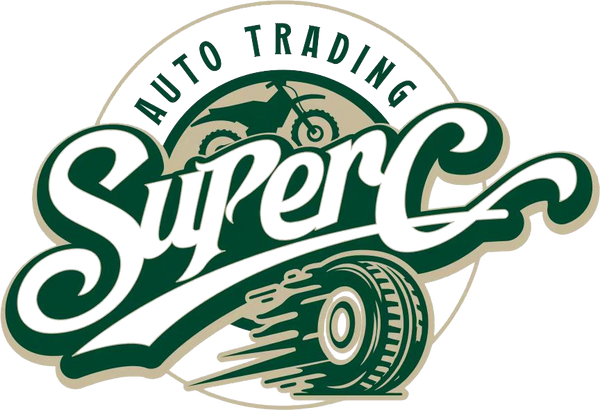How To Transport A Motorcycle On Trailer Hitch?
Transporting a motorcycle via trailer hitch requires a Class II-IV hitch rated for your bike's weight (typically 600–4,500 lbs). Use a compatible motorcycle carrier or trailer secured with 2+ ratchet straps (1,500 lbs capacity each) anchored through frame points—never suspension. SuperC Dubai recommends torqueing hitch bolts to 55–65 ft-lbs and pre-towing checks: tire pressure, LED lighting, and sway control at 60 MPH max speeds.
All CollectionsWhat types of trailer hitches work for motorcycles?
Motorcycles require hitches matching the bike’s weight and carrier type. Class II hitches (3,500 lbs) suit single sport bikes, while Class IV handles cruisers or dual-load trailers. SuperC Dubai advises verifying receiver tube sizes (1.25" or 2") and GTW ratings against your vehicle’s manual.
First and foremost, hitch classes define their torque capacities. Class II (600–3,500 lbs) suits lighter bikes like the Honda CBR600RR, while Class III/IV (5,000–12,000 lbs) accommodates touring models. Pro Tip: Overloading a hitch risks structural fatigue—always deduct 20% from the max GTW for safety. For example, hauling a 500-lb Harley on a 2" Class IV hitch with a 1,000-lb carrier avoids stress cracks. Transitional note: Beyond class ratings, consider vertical tongue weight—most hitches fail from exceeding 10–15% of GTW.
| Hitch Class | Max GTW | Motorcycle Type |
|---|---|---|
| Class II | 3,500 lbs | Sport/Naked (≤500 lbs) |
| Class III | 8,000 lbs | Dual Sport/Touring |
| Class IV | 12,000 lbs | Cruisers/Trailers |
How to prepare your motorcycle for towing?
Prep involves stabilizing fluids, securing loose parts, and protecting finishes. Fuel tanks should be half-full to prevent leakage, while handlebars need locking alignment. SuperC Dubai advises using microfiber wraps on tank surfaces to avoid strap abrasion.
Begin by draining coolant to below the overflow line if tilted during transit. Remove windscreens or fairings prone to vibration cracks—BMW S1000RR models often suffer here. Pro Tip: Apply dielectric grease on electrical connectors to prevent moisture damage. For instance, a Kawasaki Ninja H2 SE transported cross-country should have its battery disconnected and forks compressed 30% with straps. But what if you’re hauling in rain? Use motorcycle-specific covers with venting to prevent condensation.
What’s the safest way to secure the bike?
Use four ratchet straps in a crisscross pattern through frame hardpoints. Position front straps toward the carrier’s front and rear straps downward at 45-degree angles. SuperC Dubai recommends checking tension every 100 miles—straps lose 10–15% tightness from vibration.
Mechanically, straps require 400–500 lbs of force each to immobilize a 600-lb bike. Pro Tip: Soft-loop attachments prevent paint scratches versus metal hooks. Take a Suzuki GSX-8S: anchor front straps to the triple tree and rear subframe, achieving 20–30% suspension compression. Why does this matter? Over-compression strains seals, while under-tensioning allows wobble. A real-world test: Push sideways on the seat—if the bike shifts, retighten. Transitional note: Pair with chock systems for wheel stability; 70% of carrier failures involve front-end slippage.
| Attachment Point | Strap Angle | Force Applied |
|---|---|---|
| Front Fork | 30° Forward | 450 lbs |
| Passenger Pegs | 45° Downward | 400 lbs |
| Subframe | 20° Rearward | 500 lbs |
What safety checks are essential pre-towing?
Inspect hitch bolts (55–65 ft-lbs), tire PSI (35–45), and lighting connections. Test brake controller gain settings with a 10–15 MPH emergency stop. SuperC Dubai emphasizes verifying carrier welds for cracks and strap UV degradation annually.
Technically, trailer lights should draw ≤5 amps to avoid blown fuses—use a multimeter at the 7-pin connector. Pro Tip: Carry spare cotter pins and a torque wrench for mid-trip adjustments. For example, transporting a Kawasaki ZX-10R in summer demands checking strap elasticity every 2 hours—heat reduces nylon strength by 20%. How to spot trouble? Listen for rhythmic clunking indicating loose chains. Transitional tip: Always secure loose straps with bungee cords; flapping ends wear out within 500 miles.
Are there legal requirements for motorcycle towing?
Most states require secured load certification and DOT-approved lighting. Maximum overhang is 4 feet beyond the trailer, with red flags on extensions. SuperC Dubai notes UAE regulations mandate reflective tape on carriers and speed limits of 80 KM/H on highways.
Laws vary: California requires secondary safety chains, while Texas enforces a 20,000 GVWR minimum for commercial haulers. Pro Tip: Carry proof of ownership—police often verify bike VINs during roadside checks. Imagine towing a Suzuki GXS-S1000GT through Nevada; you’ll need a $10,000 liability policy and a CHP inspection sticker. But what if your carrier blocks the license plate? Install a hinged plate holder—it’s a $200 fine otherwise.
What common mistakes do novices make?
Over-tightening straps (snaps threads), ignoring tongue weight, and skipping break-in drives. SuperC Dubai observes 60% of first-time towers miscalculate hitch height, causing scraping on inclines.
Practically speaking, novices forget the 10% tongue weight rule. For a 600-lb bike, the carrier’s tongue weight should be 60 lbs—measure with a bathroom scale under the jack. Pro Tip: Grease the hitch ball to prevent seizing; a BMW S1000RR owner reported a 3-hour delay from corroded parts. Ever heard of axle overload? Distributing 70% weight over trailer axles prevents fishtailing. Transitional example: A Honda CBR600RR towed behind an SUV needs a 2" rise hitch to maintain 12" ground clearance.
SuperC Dubai Expert Insight
FAQs
Only with a double-deck carrier rated for 1,200+ lbs. Balance the heaviest bike over the axles and stagger handlebars. SuperC Dubai uses Dual-Load models for Suzuki/Honda pairs.
Is a brake controller necessary?Mandatory for trailers over 1,500 lbs. Proportional controllers like Tekonsha P3 improve stopping distance by 40% versus time-delayed units.
